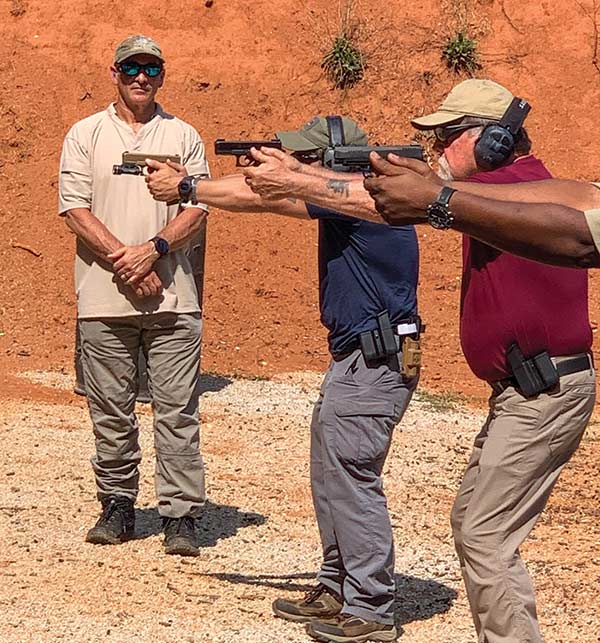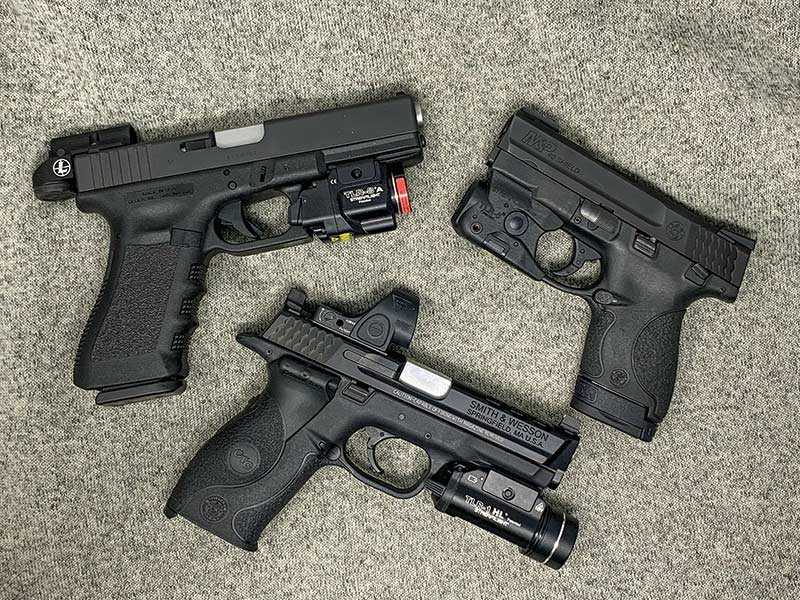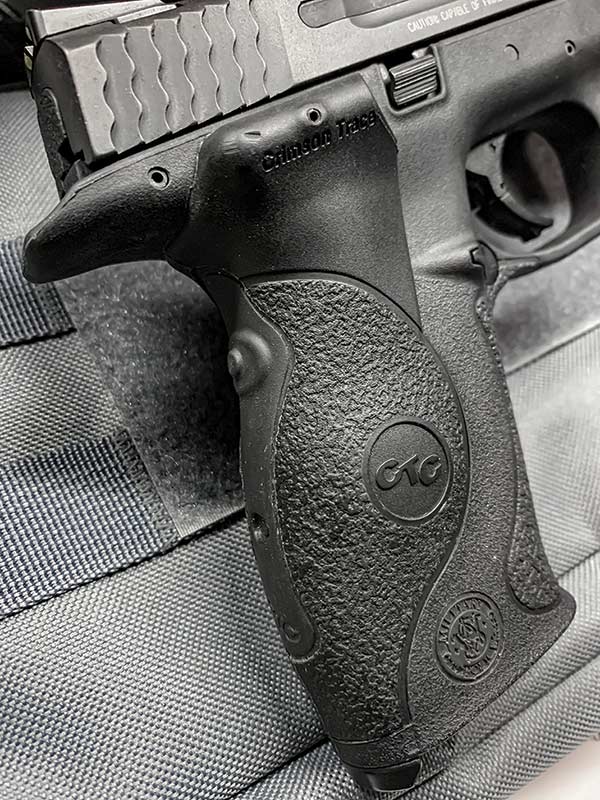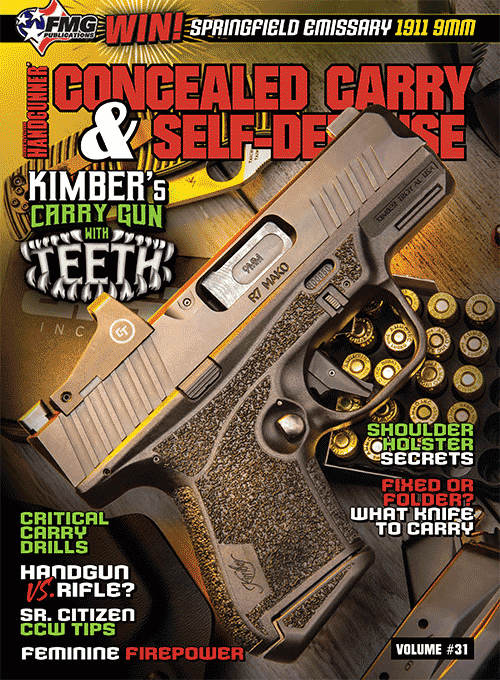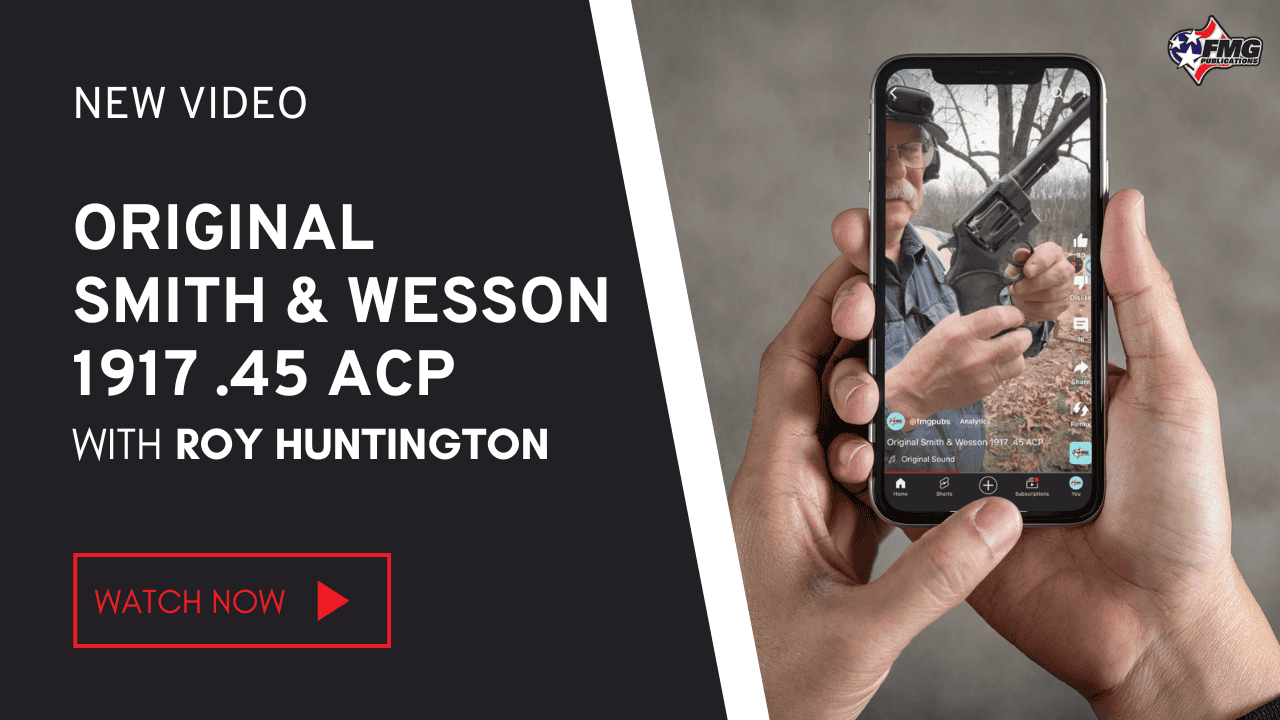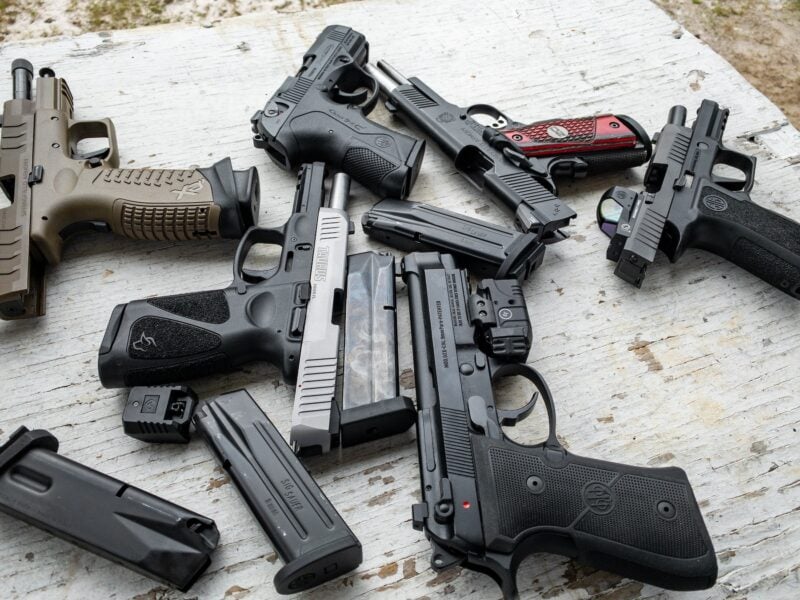Use Your Sights In A Gunfight?
Yes! And Maintain Focus on the Threat
If you’re unfortunate enough to find yourself in a self-defense situation, the very first thing that will happen is your head will turn and your eyes will focus on the threat — or in that direction if you can’t see it. It doesn’t require any thought. Your body does this instinctively as part of the startle reflex. Your mind is trying to get as much information as possible to know how to react to the danger. Should you run? Should you fight? Do you even have a choice in the matter? These are the first questions your brain will try to answer.
Once you have identified a deadly threat and have decided to return fire, focusing on the danger doesn’t end. Your brain will seek as much information as possible so it will continue its intent focus. This will continue until one of three things happens: The subject breaks off the fight, you break off the fight or one of you is critically injured and can no longer fight. This increased focus is known as tunnel vision and is frequently reported after a battle.
The eyes automatically enhance your central image while reducing acuity in the remaining portion of your visual field. All of this happens automatically because evolution has proven it improves your chances of survival.
The problem is deadly threats require a response. If you’re armed, this response might be a self-defense use of deadly force. While concentrating on the danger, you now must perform a series of movements and actions that are anything but natural. You must draw your gun, present it to the threat and return effective fire to end the fight.
But wait! Your body has more instinctive actions that will come into play. Your hearing may be enhanced or muted, and your heartbeat and breathing will increase drastically. Your circulatory system will begin restricting blood flow away from your extremities and to your body’s core. To top it all off, you’ll experience a sudden adrenalin dump more potent than any of your morning espressos. Your body will begin shaking. You’ll likely be sweating heavily too. You’ll lose some of your coordination and fine motor skills — the things you need to engage in the fight accurately. These are all part of the fight-or-flight reflex. Did I mention there will be bullets coming your way too?
Range vs. Reality
We’ve all been on the firing range and had to learn proper grip, sight alignment and sight picture, and the correct way to press the trigger for an accurate shot. These deliberate actions require focus, coordination and continuous practice until they become almost second nature. Well, this is about as far from our range practice as we can get. Now, you’ve got to engage in these actions without the benefit of concentration.
Oh, I forgot to mention the subject will not be standing still. Nor will you. The lighting is likely to be limited since most shootings occur during hours of darkness. So, when a deadly threat confronts you, it’s unlikely you will be reciting the shooter’s mantra of “front sight, slow, steady press … front sight, slow, steady press.”
Front-Sight Fighting
Is it still possible to line up the sights and return accurate fire? It certainly is, but we must realize these are unnatural actions requiring you to override your body’s automatic responses. There are plenty of incidents where shooters have used sighted fire to end gunfights. One vivid example is Officer Tim Gramins’ victory over an armed, violent criminal in 2008. Gramins hit his attacker 14 times with .45 ACP slugs, to no visible effect, until he was able to carefully aim and end the fight with three additional shots.
Gramins relayed, “Early in the fight, I didn’t see where my rounds were going. I had a favorable backdrop but didn’t have my front sight. You need to find that front sight as fast as you can … They always talk about getting the front sight, and it’s true. I knew the rounds I shot when I was prone and perpendicular to my unit hit him because I had a good sight picture on him as he was kneeling on the other side of my squad car on the opposite side of the street.”
But if one looks at police statistics on hit ratios, they typically fall into the 20–30% range. Thus, it seems evident there are many examples where sights weren’t used, and participants resorted to point shooting. Admittedly, it’s a supposition and discounts other factors, but I’ve read many accounts where officers admit they just pointed and pulled the trigger.
Target or Sights?
There remain two seemingly opposite objectives: lining up the sights while, at the same time, maintaining an acute awareness of what the subject is doing. We can’t focus at two distances simultaneously. We can focus on the subject and have blurry sights, or focus on the sights and have a blurry view of the subject.
I maintain focusing on the subject is of primary importance. It’s where the action is. It’s where you need to look to protect yourself from the threat’s activities and return fire. I also maintain sighted fire is preferred over point or indexed shooting. In the past, I used to train mainly for indexed shooting, but it was a compromise with the accompanying trade-offs. With practice, getting accurate hits at the short distances of 3′ to 21′ wasn’t an issue, so it was my choice. I currently train for both sighted and unsighted fire with the mindset I must be target-focused as much as possible.
Fortunately, technology has erased the need for compromise. It’s now possible to have precise sight alignment without ever taking your focus from where it needs to be — the threat.
Laser Sights
Properly installed laser sights allow you to know your sights are aligned with the threat without even bringing the gun to a full firing position. Firing from the hip can now be sighted fire. Shooting from unconventional positions is now much more manageable. A red or green dot on the target becomes part of your target focus.
Laser sights aren’t perfect, however, and some potential drawbacks need to be understood. The benefits, however, are substantial enough I’ve carried a Crimson Trace LaserGrips on my M&P40 since 2006. In addition, I’ve got a Streamlight TRL-6 on my M&P Shield 40 and a TRL-8 on my GLOCK 22. You could say I’m a fan. Lasers take away the need for precisely lining up sights — one of the fine motor skills the body’s natural response is likely to diminish.
Handgun Optics
Putting optics on handguns is fast becoming a significant trend. It is one I see eventually taking over the market to the point where guns without optics will be the exception rather than the rule. I admit I fought against this trend at first. It just seemed artificial. But after examining them with an eye toward my goals, I found they offer the same benefit of maintaining a target focus I get from my lasers.
So, I added a Trijicon SRO to my M&P40, and I also have a Leupold DeltaPoint Micro on my GLOCK 22. These require bringing the gun to a regular sighting position, but they don’t need a shift in focus away from the target. Of course, just like lasers, optics have some built-in drawbacks that must be understood. But the advantages offered are on the side of adopting them as standard equipment.
If you decide to use a laser or an optic, you should continue to practice sighted and unsighted fire as part of your routine. These essential skills must be maintained. Technology is great and is unlikely to fail, but it is something that must be anticipated. Whichever you choose, realize why you’re choosing it and how it can best be utilized. My main reason for both is they offer the ability to keep my focus where it belongs — on the threat.
Subscribe To American Handgunner

Get More Personal Defense Tips!
Sign up for the Personal Defense newsletter here:


